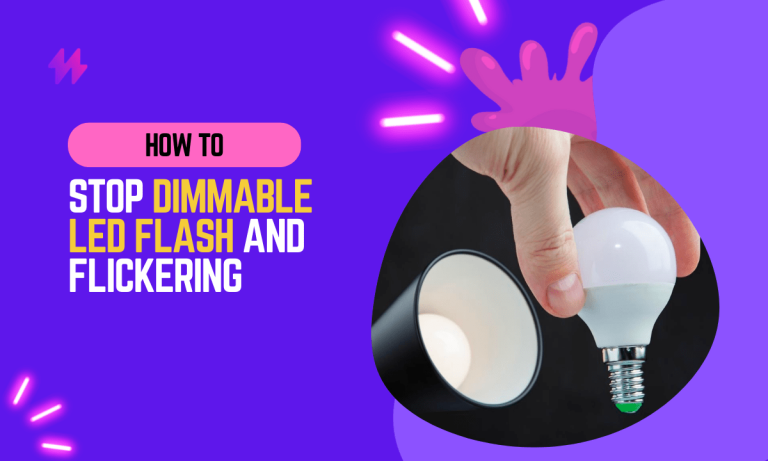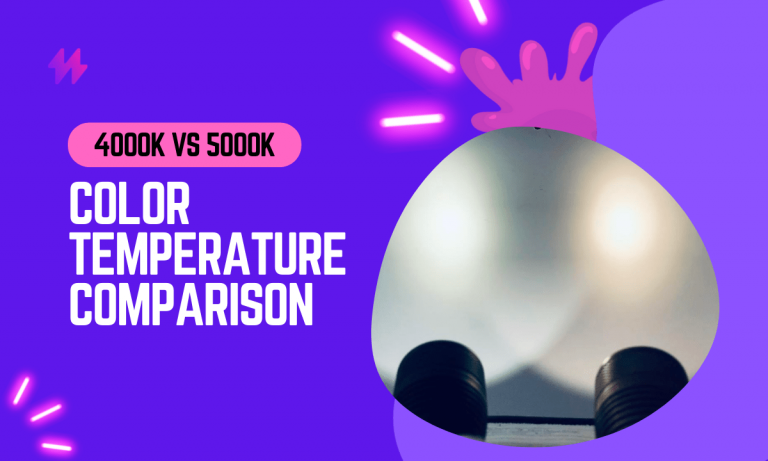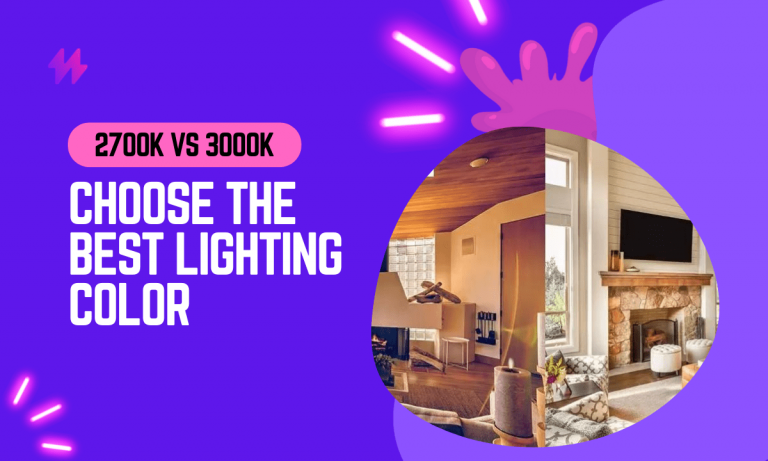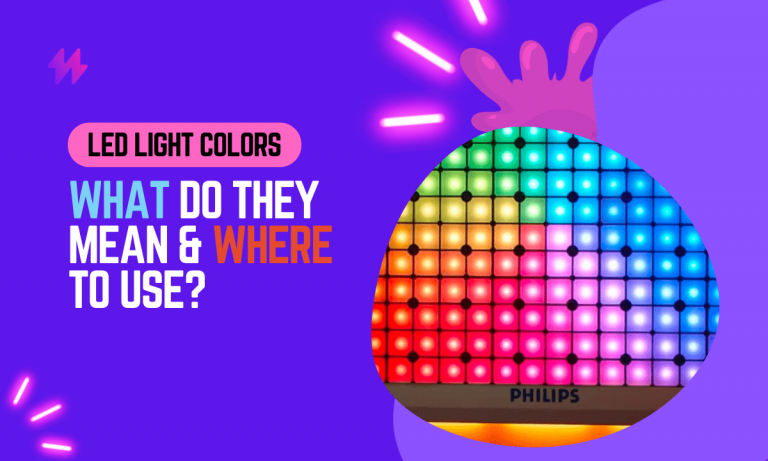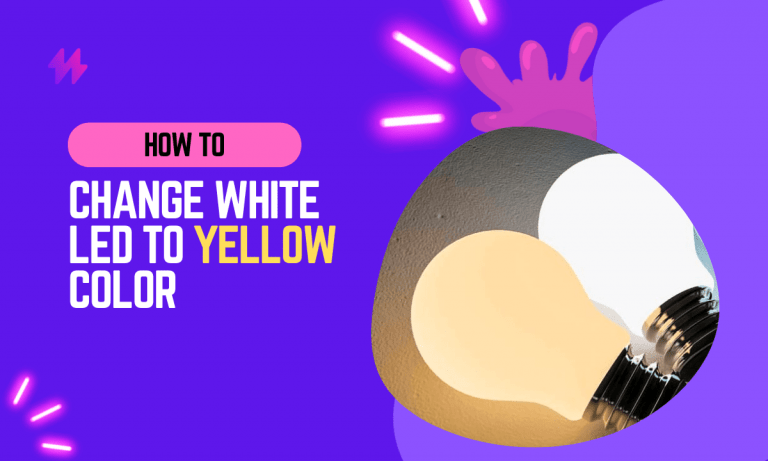Bright White vs Daylight Lighting – What’s the Difference?
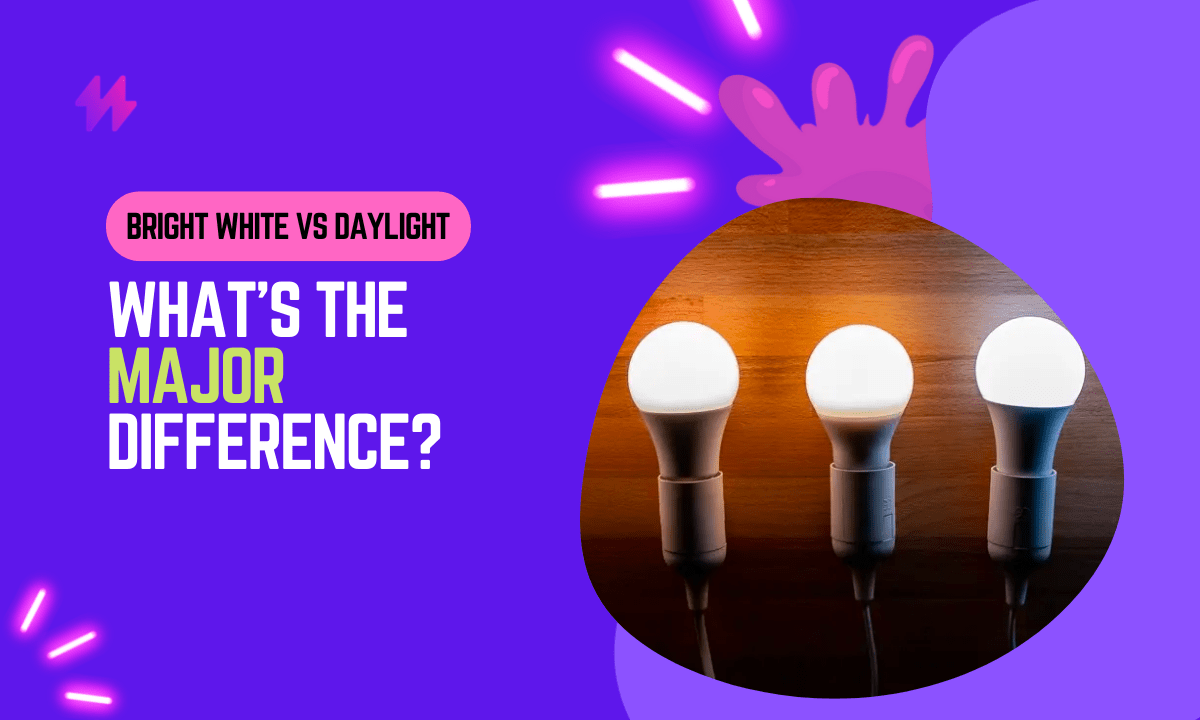
When purchasing new light bulbs for your home, you may come across different descriptions of the type of white they emit. While “Soft White” is straightforward, the terms “bright white” and “daylight” can be a bit confusing.
The truth is that daylight is a type of bright white light, but there are nuances in the specific shades of white they display.
A bright white bulb produces a pure white light, while a daylight bulb imitates the color temperature of natural daylight, which is situated higher on the Kelvin temperature scale and appears more blue-white.
To explain the variations in more detail, let’s get into more detail.
What’s the difference between Daylight and Bright White bulbs?
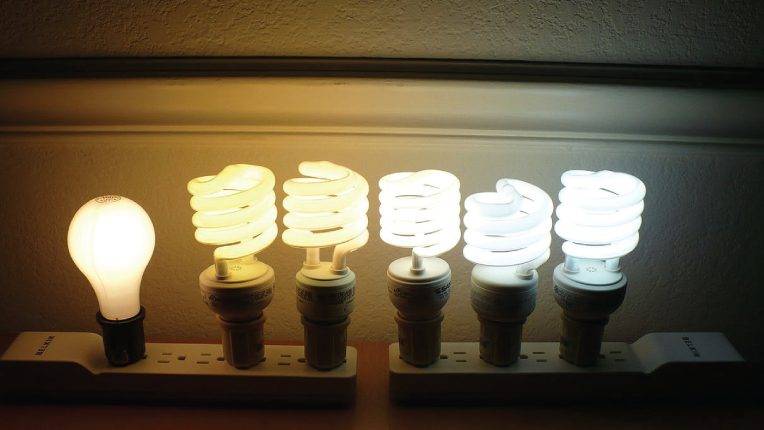
When discussing different colors of white light bulbs, we refer to the color temperature measured in Kelvins (K). The Kelvin scale ranges from approximately 1000K to 10000K and represents the color of the light on a white spectrum.
The lower Kelvin values lean towards orange tones, while the higher values lean towards blue, although they are all variations of white light.
Bright White and Daylight bulbs are two different options along this Kelvin scale. Typically, a Bright White bulb has a Kelvin rating of around 3000K, while a Daylight bulb is closer to 5000K.
However, it’s important to note that “Bright White” and “Daylight” are not scientific; only the Kelvin rating provides a precise measurement. LED light manufacturers may label a 3500K bulb as “Bright White” and a 4500K bulb as “Daylight.”
Understanding the Kelvin scale helps you choose the right bulb. A 3000K rating is considered almost pure white, striking a good balance between orange and blue tones to produce very white light. Anything up to approximately 3500K will likely have a similar appearance.
Around 4000K, a slight blue hint becomes noticeable in the white light, but it still appears natural until around 5500K, producing a cool blue-white light. Around the 5000K mark, the light will resemble natural daylight.
Bright White vs Daylight: Comparison Table
| Aspect | Bright White Bulb | Daylight Bulb |
|---|---|---|
| Color Temperature | 3000K-3500K | 5000K |
| Light Appearance | Pure white | Blue-white |
| Best Use | General lighting (Bathrooms, hallways, and bedrooms) | Task lighting (Offices, garages, kitchen) |
| Ambiance | Welcoming, bright and alert | Energetic, focussed |
| Energy Efficiency | Energy-efficient | Energy-efficient |
Which Light Is Brighter, Daylight Or Bright White?
The concept of brightness can be viewed from two perspectives: color temperature and actual luminosity.
When considering color temperature alone, a Daylight bulb will appear brighter than a Bright White bulb because it closely resembles the hue of natural daylight. However, it’s worth noting that the difference in brightness based on color temperature is generally minimal, as bright white bulbs still provide bright and crisp light.
On the other hand, when discussing brightness in light bulbs, the actual luminosity, measured in lumens, is more significant. Lumens directly measure how bright a bulb is.
For instance, a 40-watt equivalent LED bulb designed to replicate daylight may have a brighter color, but it will be considerably less powerful in terms of luminosity than a 100-watt equivalent bright white bulb.
If you’re curious about the connection between brightness and power usage, our Lumen to Watt calculator might be just what you need.
From a scientific standpoint, the bulb with higher luminosity will provide more lumens, resulting in greater brightness. However, if the bulbs have equal lumens, the daylight bulb will appear brighter due to its color temperature.
Have you ever wondered about the difference between Cool White and Neutral White lighting?
What Are Other Types Of Color Temperature Bulbs?
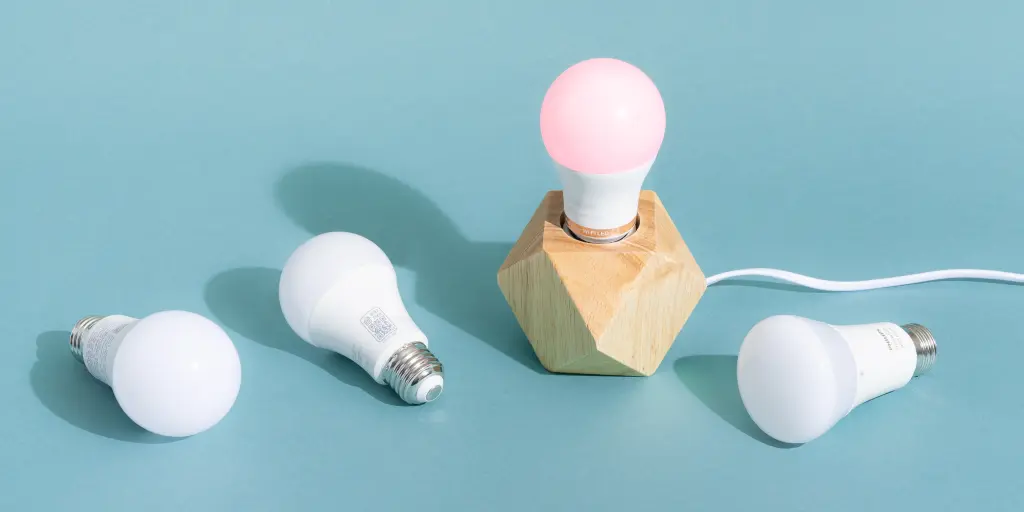
Most people are familiar with Bright White and Daylight bulbs, but there are also many other types of light bulbs on the market that offer different lighting options.
- Soft white bulbs have a Kelvin rating of 2700K to 3000K and are often used in areas where relaxation is important, such as bedrooms or living rooms.
- Bright White bulbs have a Kelvin rating of 3000K to 3500K and are ideal for areas where activities such as reading and studying will take place.
- Cool White bulbs have a Kelvin rating between 4000K to 4500K, providing a bright light perfect for task lighting applications.
- Bright Daylight (Daylight Deluxe) bulbs can range from 5000K to 6500K and provide brighter light than natural Daylight but still appear white.
What Color Is Closest To Natural Light?
Directly answering this question is challenging due to the variability of natural light’s color temperature, which is influenced by factors such as time of day and weather conditions.
To provide a simplified response, the closest bulb to natural light, specifically the midday sun on a clear day, would be a daylight bulb with a color temperature of around 5000K.
A soft or warm white bulb is designed to replicate the color temperature of a sunset or sunrise, making it ideal for creating a relaxing atmosphere in the evening.
Daylight Deluxe bulbs aim to imitate the color of light on a warm, cloudy day when the presence of clouds reduces some of the orange tones in the sunlight.
Final Words
Bright White and Daylight bulbs are the two main types of light available. Bright White is ideal for task lighting applications, while Daylight offers a softer, more calming effect. Bright white bulbs have a color temperature of 3000K, while daylight bulbs are closer to the 5000K mark.
In conclusion, the distinction between bright white and daylight lighting options plays a critical role in how spaces are perceived and how they function under artificial light. Bright white lights, typically defined by a color temperature in the range of 3000K to 4000K, emit a clean and neutral light that enhances the vividness of colors without skewing color accuracy. This type of lighting is ideal for spaces that require clear visibility and a touch of warmth, making them perfect for living areas, kitchens, and bathrooms where a welcoming yet functional atmosphere is desired. The neutral tone helps in reducing strain on the eyes during tasks that require attention to detail, such as cooking or reading.
Daylight bulbs, on the other hand, offer a higher color temperature starting from 5000K and can go up to 6500K, resembling the color spectrum of natural daylight. This quality makes daylight lighting particularly well-suited for environments where precise color perception and high contrast visibility are necessary. Applications such as home offices, workshops, and garages benefit greatly from daylight bulbs, as the cooler, bluer light enhances concentration and increases alertness. Additionally, daylight LED bulbs are often used in settings where artists or designers work, as they provide excellent color accuracy and reduce the yellow tint that can alter the appearance of paints and fabrics. Understanding the specific needs of your space and how lighting can impact your daily activities will help you make an informed decision between bright white and daylight lighting, ensuring that your environment is both functionally and aesthetically aligned with your goals.


